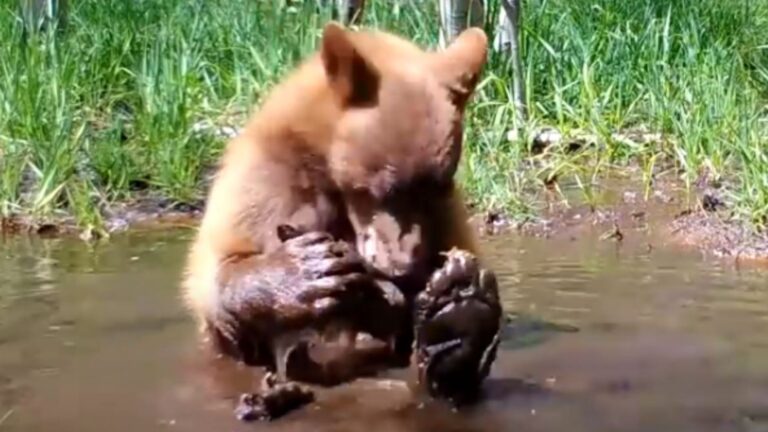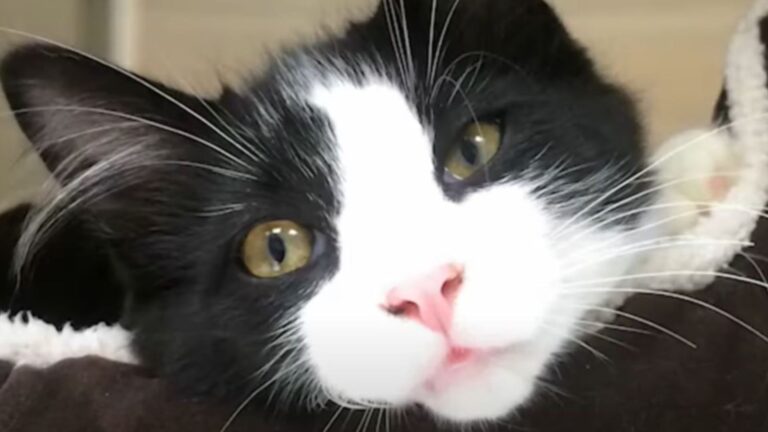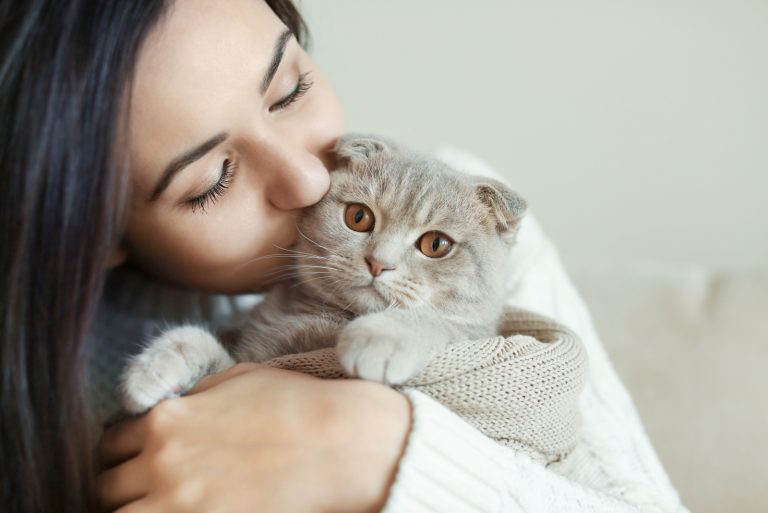Why Do Cats Have Tails? 13 Questions & Answers
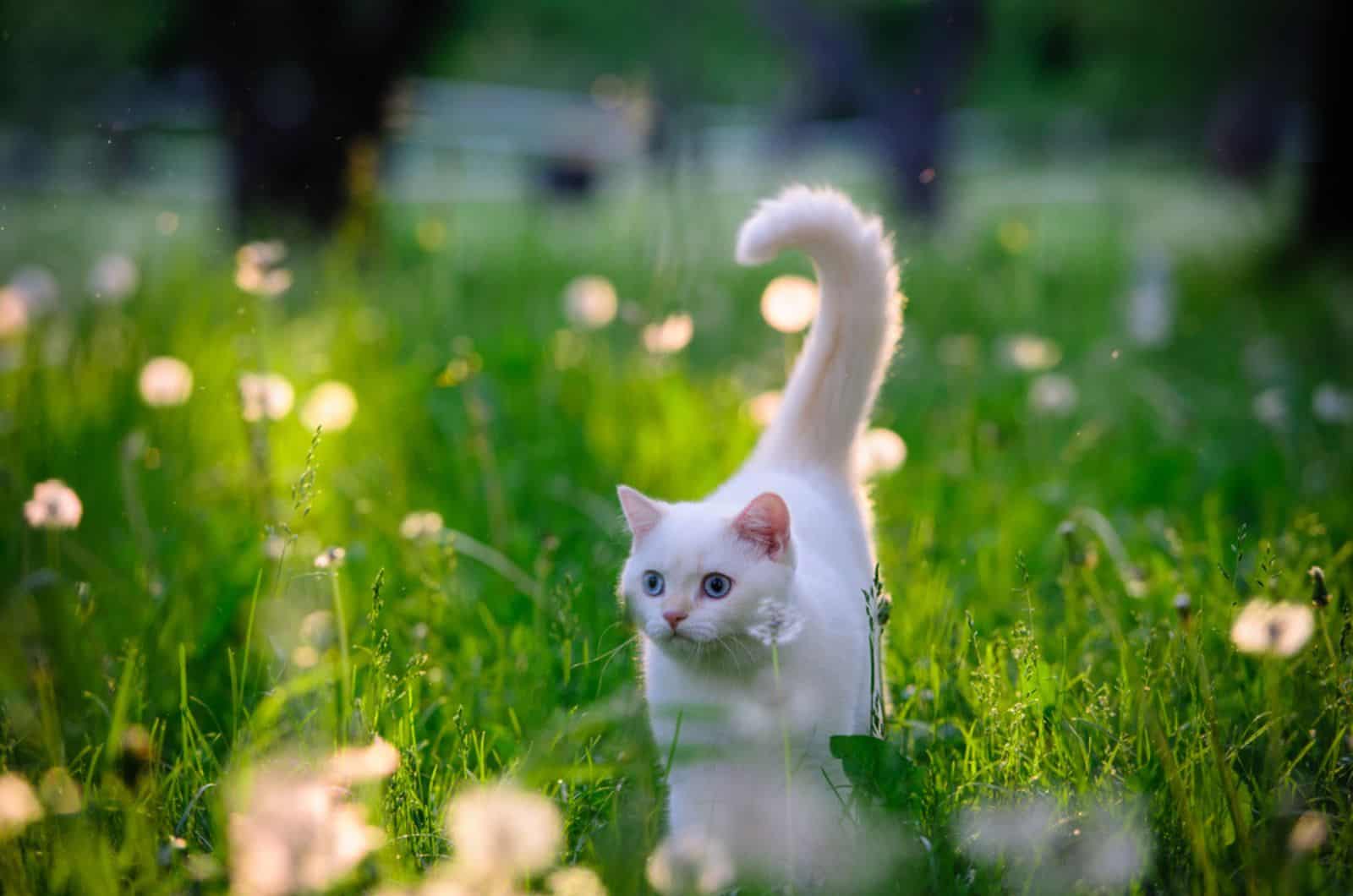
Have you ever wondered Why do cats have tails? I’m sure some cat parents must have asked themselves this – why else would you be here?! Trust me, you will be surprised to learn how important a cat’s tail is.
A cat’s tail has several different functions, such as helping a cat maintain its balance, expressing a cat’s mood or even as a means of communication. It is an important part of their sensory system that provides vital information from the environment and also functions as a means of territory-marking.
If you want to learn more about the many functions of cats tails, discover if cats can live without their tails and learn how potentially dangerous tail-injuries can be, I recommend every cat owner to continue reading.
1. Why Do Cats Have Tails?

Tails are very important for cats as they perform the following functions:
• Help cats maintain their balance
• Help cats communicate
• Form a major part of the cat’s sensory system
• Are used to mark a cat’s territory
Let’s explore each of these functions of a cat’s tail in more detail.
2. How Does A Cat’s Tail Help With Their Balance?
The best visual representation of how a cat’s tail helps with their balance is seeing a cat walking along a narrow edge. If you ever get a chance to watch this, pay close attention to the cat’s tails.
A cat’s tail is used as a counterweight to maintain balance and stop the cat from falling to one side.
When we need to balance, we use our arms as counterweights, the same way cats use their tail. A cat’s tail moves in the same way as we might move our arms when we’re walking on the edge of the sidewalk.
However, cats don’t just use their tail for balance when carefully walking on narrow edges; they use it when they’re walking on the ground too!
For example, if a cat suddenly leans too far, the tail will go in the opposite direction as the cat moves or unexpectedly shifts. This is an automatic movement that allows the legs and rear hips to quickly realign and adapt, maintaining balance on all fours.
3. How Do Cats Use Their Tails For Communication?
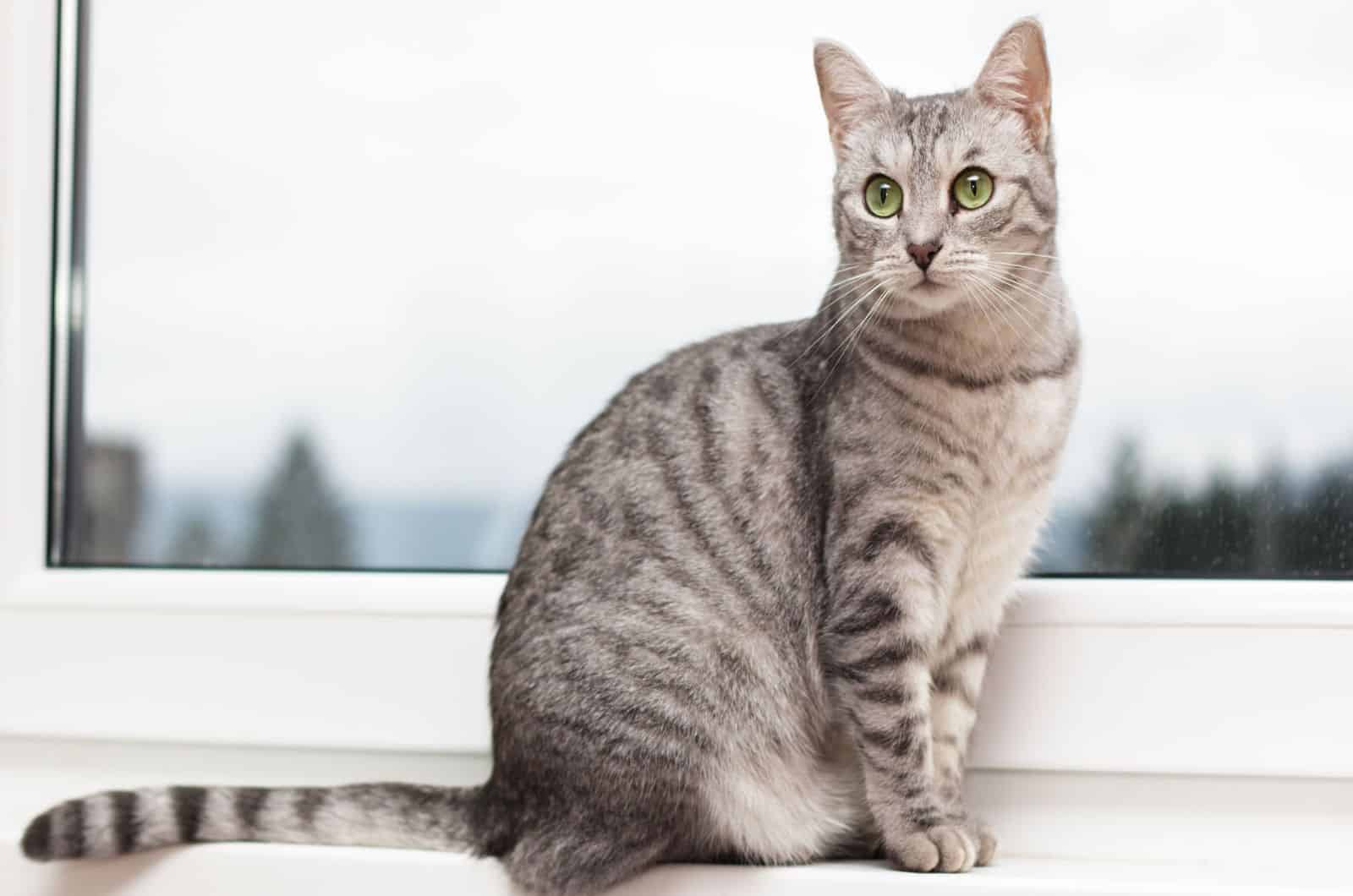
As we know, cats cannot talk in order to tell us what they’re thinking or feeling. Instead, they rely on body language. Both body language and vocalizations are important when communicating with other cats, other animals (mostly predators), and to us humans.
Let’s investigate how cats communicate with us and other animals using their tail position!
I’m Happy And Friendly
You will be able to recognize happy, friendly cats by their tails standing up towards the sky. It’s also common for the tip of their tails to be slightly bent in what is known as the question mark form, which is very easy to recognize.
So, next time you see a cat walking around with its tail straight up, it means “Hey, let’s socialize!”.
I’m Excited
When a cat’s tail is straight, pointing up in the air and also quivering, it means the cat is excited. You will usually notice this when you come back home from working all day, or when your cat hasn’t seen you for some time and has missed you.
Your cat probably expects some attention or some playtime, so make sure to satisfy your cat’s needs!
I’m Relaxed
It’s very easy to identify relaxed cats when they’re simply walking around with nothing better to do – their tails are straight but not pointing up in the air, but rather along their backs.
When a cat is lying down and relaxed, the tail will also lie flat on the ground.
I’m In The Mood For Cuddles
When a cat wants to be petted for a bit, or to demand some love or cuddles from their owners, they will wrap their tails around the owner’s leg, for example. This is simply your cat’s way of displaying affection, perhaps with the goal of getting some affection from you in return!
I’m Nervous And A Bit Scared
When a cat is nervous, for example due to the presence of an unfriendly cat in the backyard, you might see the cat’s tail tucked between its legs, or wrapped around the cat’s body.
This can be observed when a cat is being submissive in the presence of a more dominant cat.
I’m Aggressive And Ready To Defend What’s Mine
Cats who feel threatened may either become frightened or hostile. An automatic, reflexive behavior is puffing up their tails as a way of saying “Do not get any closer!”.
The puffed up tail is held erect in the air to make the cat appear bigger and scarier to any potential threat.
I’m Annoyed
When cats move their tails slowly from left to right, it usually means they are annoyed. This slow swish is a good indicator that you should stop whatever you’re doing, such as taking away their toy or petting them too aggressively.
Understanding what each tail position means can give you valuable insight into what your cat is thinking and feeling.
4. How Is A Cat’s Tail Part Of Their Sensory System?
A tail is densely packed with both motor and sensory nerves. Why is that important? In general, a cat’s brain receives information from sensory nerves, processes that information, and then gives instructions to motor nerves on how to respond.
As a cat’s tail contains sensory nerves, it also sends information to a cat’s brain about the surrounding environment.
Cats’ tails, like their whiskers, are an essential part of their sense of touch. It may use its tail to feel surfaces and determine whether they are safe or not.
A cat’s body receives messages from all these nerves in its tail to help it coordinate an appropriate response to its surroundings. This is an essential component of your cat’s lightning-fast response mechanism.
5. How Do Cats Use Their Tail For Territory-Marking?

As you probably already know, cats are very territorial creatures. They will use scent to mark everything they consider to be theirs – even their owners! Thankfully, your cat will definitely not pee on you as a way to mark you as “theirs”, but it will rub its body against you!
A cat’s tail contains caudal glands, which are scent glands that release pheromones. These pheromones are chemicals that are undetected by a human’s sense of smell but other cats can detect them.
If you observe your cat rubbing the base of its tail over objects or on you, this is a clear sign that your cat is marking its territory.
Although you will not be able to sense it in any way, your cat will have imprinted on you by leaving its scent on you!
6. What Is A Cat’s Tail Made of?
Although a cat’s tail might seem like a relatively simple structure, it is actually very complex.
A cat’s tail consists of:
• Caudal vertebrae
• Muscles
• Ligaments
• Tendons
• Nerves
• Blood vessels
It’s important to note that a cat’s tail does not contain the spinal cord. The tail is an extension of the spine rather than part of the spine itself.
However, a significant number of nerves diverge from the spine and travel through the base of the tail and along it.
7. Do Cats Have Control Of Their Tail?

Consider, for example, your hands. While you do have control over them, your hands also move involuntarily according to your reflexes.
The same goes for a cat’s tail; the cat controls the majority of the tail movements, but not all of them. Your cat can control their tail by using the muscles distributed across the base of the tail.
A cat’s tail will occasionally wag involuntarily, a bit like how we frequently blink without realizing it. This often happens when your cat is dozing off and its tail begins to quiver.
8. Is Tail-Injury Dangerous For Cats?
The tail is a sensitive and vulnerable part of a cat. This is because of the structure of the tail – it contains vertebrae, nerves and blood vessels.
Injury to any of these can cause serious health issues for your cat. Many cat owners do not realize how dangerous a tail injury can be for cats!
A severe tail injury can result from something as simple as stepping on the cat’s tail or closing a door with the cat’s tail in the way. No matter how the injury occurs, the consequences can be quite severe, including:
• Loss of sensation in the tail
• Loss of motor function in the tail
• Permanent damage to the cat’s spine
• Inability to walk
• Inability to urinate properly
• Inability to defecate properly
Of course, not all tail injuries have consequences as severe as those mentioned above, but the more serious injuries can definitely have devastating consequences for your cat.
Since cat tail injuries can be excruciatingly painful, you should consult your veterinarian immediately if you suspect there might be a problem.
9. Can A Cat Live Without A Tail?
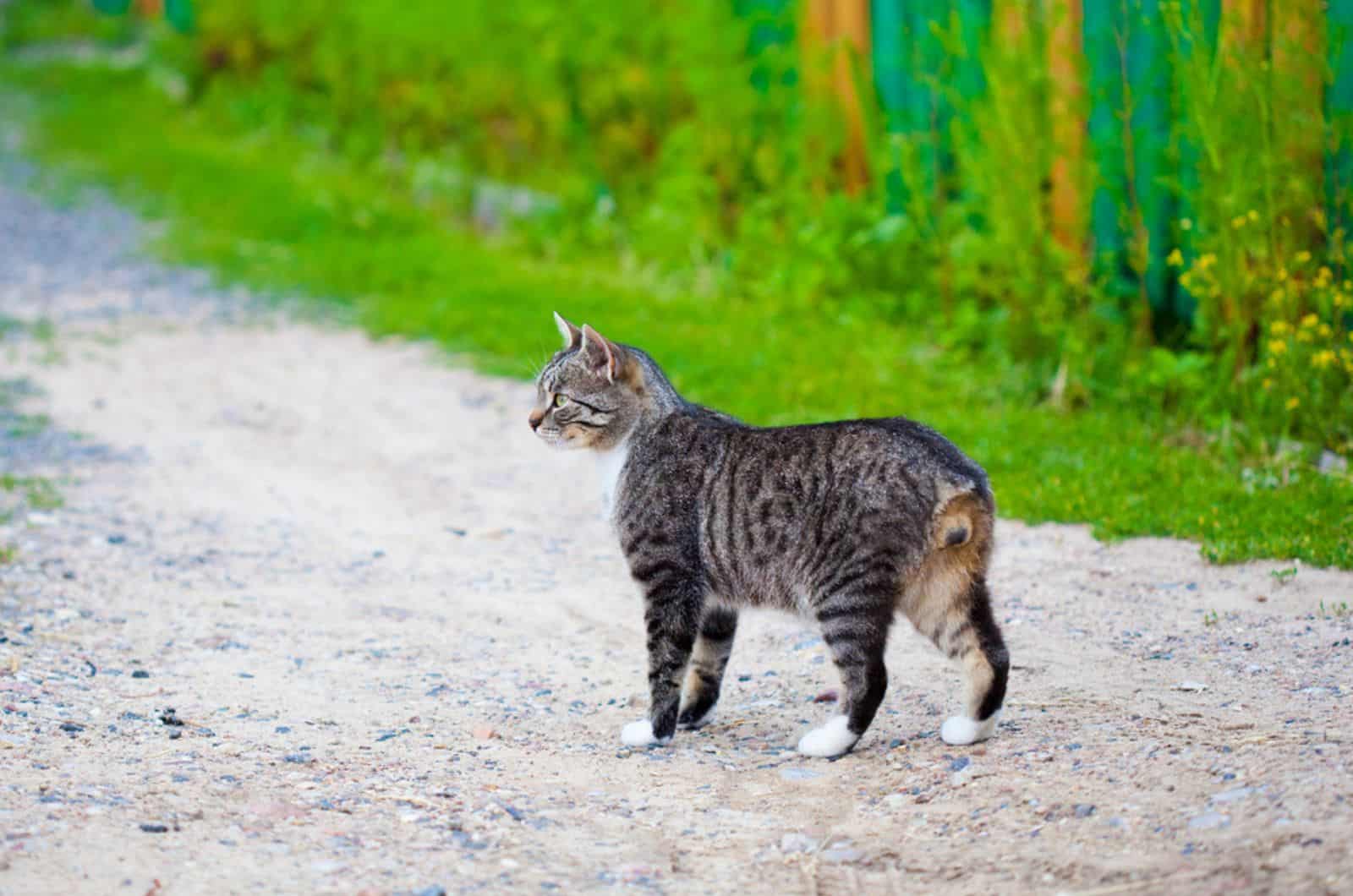
Yes, fortunately, cats are still able to lead a perfectly normal life, even if they don’t have a tail.
If a cat sustains a serious injury it can sometimes result in tail amputation. If this has to happen, there is no need to be worried.
A cat’s body will learn to make up for the loss of its tail by adjusting its muscles and senses, enabling it to respond properly. It could take some time, but after the cat adapts, it will be able to live a normal life.
Some breeds of cat have no tail, or a very short tail (so-called bobtail cats). These tail-less kitties are not any less active, mobile, or agile than a cat with a tail.
Even though a cat’s tail has several important functions, it’s not an absolutely crucial part of a cat’s body!
10. Do Tailless Cats Exist?
Yes, there is one cat breed famous for having tailless members – the Manx.
Manx cats are famous for being completely tailless; this is the breed’s most distinctive feature. Although it must be noted that many manx cats do have a little stub of a tail, and that’s why they’re sometimes considered to be bobtail cats.
Bobtail cats technically do have a tail, but it’s just not the typical long tail that most cats have – instead, it’s a little “bobbed” tail.
The lack of the standard long tail is due to a genetic mutation that means the tail doesn’t develop normally, so these cats have a short tail which is usually around 5 inches in length.
Some bobtail cat breeds include:
• Japanese Bobtail
• American Bobtail
• Manx
• Pixie-bob
• Highlander
• Cymric
• Kurilian Bobtail
11. Do Cats Enjoy Having Their Tails Petted?

Although some cats accept (or even like) having their tails handled, the majority of cats don’t like it. If you’ve learned this the hard way, I am sorry! At least now you know not to do it again!
Kids are especially prone to reaching for a cat’s tail, but this should be discouraged, as most cats dislike having their tails petted and they may react defensively.
Cats often hate having their tails touched because this part of their body is extremely sensitive.
The tail is densely packed with nerves, so even briefly touching the tail can quickly lead to overstimulation, which is very uncomfortable (and possibly painful) for the cat.
There are other parts of the body that cats absolutely love having petted – under their chin, around the ears, and along the back are the areas that usually prove most popular.
12. Does Pulling A Cat’s Tail Hurt Them?
Pulling a cat’s tail should always be discouraged, for a number of reasons. First, there is no reason to do this. Secondly, it’s very uncomfortable for the cat. Thirdly, pulling a cat’s tail can lead to severe avulsion injuries.
Avulsion injuries caused by pulling a cat’s tail aggressively are when nerves are torn or damaged. The cat’s tail is connected to the rest of the cat’s body at the base of the tail, which is a site filled with nerves.
Tail pull injuries have the potential to harm the nerves that regulate urine and feces release which are located further up in the spinal column.
In no circumstance should you play, tug, squeeze, or pull on a cat’s tail. This will make your cat feel uncomfortable emotionally, even if you don’t physically harm the tail.
Severe physical injuries can lead to several serious problems, such as incontinence or loss of mobility of the tail.
13. How Are Tails Different In Domestic And Wild Cats?
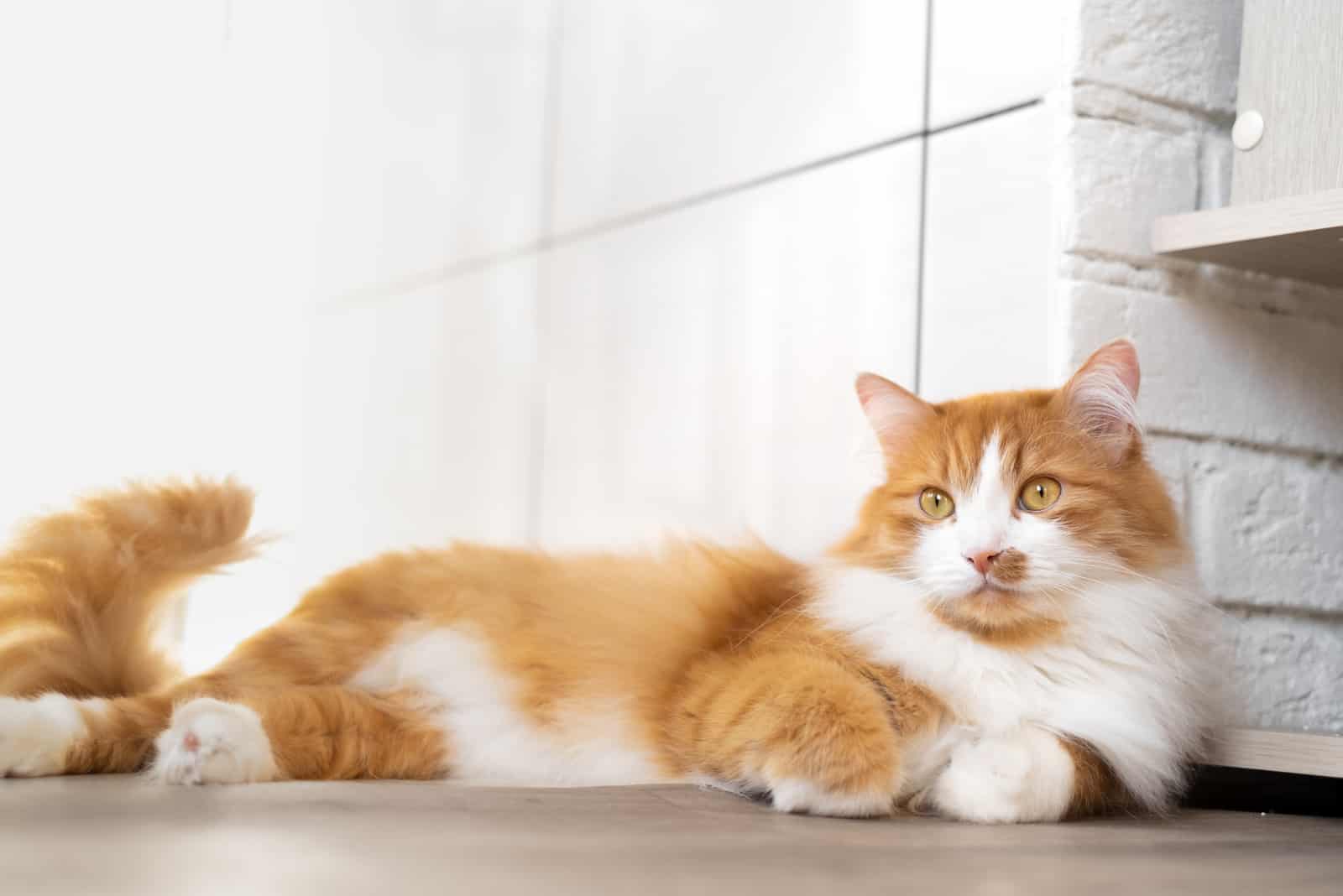
You might be surprised to learn that the tails of domestic and wild cats do differ.
The biggest differences are in the length of the tails; the tails of wild cats are longer than the tails of domestic cats. This is because wild cats are dependent on catching their prey, which often involves climbing, when the tail is essential for balance.
The tail is needed as a counterbalance while climbing and balance is extremely important for efficient and successful climbing. Domestic cats don’t really need to climb trees in order to catch their prey, so they don’t need very long tails. Wild cats do need long tails, as they’re vital for pouncing and catching their prey.
There is another interesting difference – you will only ever see domestic cats holding their tail erect in the air while walking. Wild cats keep their tails down or between their legs while walking.
A Couple Of Quick FAQ
Do All Cats Have Tails?
Most cats have tails, but there is a group of tailless cats – the bobtail cats. They technically have a tail, but it’s so short that many people don’t consider it to be a tail at all. Within this group of cats of various breeds, the Manx cat breed is special. Many Manx cats have no tail at all!
How Does A Cat’s Tail Help Its Balance?
A cat’s tail helps maintain its balance by acting as a counterweight. Essentially, it serves the same role as your arms when you extend them while you walk along something narrow.
Do Cats Have Control Of Their Tail?
Yes, cats do have control over their tails. Although some tail movements are involuntary, for example in quick, reflex reactions or while sleeping.
Are Cats Aware Of Their Tails?
Yes, cats are absolutely aware of their tails! They know it’s there and they pay close attention to making sure their tails are unharmed. A cat’s tail is packed with nerves, making it a very sensitive area. A cat can sustain serious injuries to its tail and this can be very painful, so cats are extremely cautious where they put their tail.
Why Do Cats Thump Their Tails When Lying Down?
There are multiple explanations for why cats thump their tails when lying down. The most likely explanation for this cat behavior is that they are simply relaxed and satisfied. It can also mean that they like your companionship and attention if they’re thumping their tail when you’re petting them. A playful cat ready to pounce can also thump its tail while lying on its back.
In Conclusion
A kitty’s tail is a very important appendage! People often talk about the importance of cats’ whiskers, but cats’ tails are just as important!
Their function is fascinating and keeping the tail healthy is essential to a cat’s wellness.
I’m sure you now know the answer to Why do cats have tails, but let’s do a final overview.
Cats use their tail to maintain balance, to communicate their mood, to mark their territory and also to gather information about their surroundings. As an extension of their spine, tails are very important body parts, although cats can live without it.
Make sure to teach your children to treat a cat’s tail as they would any other body part, not as an interesting toy! Most cats really don’t like having any part of their tail touched or petted. Apart from discomfort petting brings to them, tail injuries can be a major source of discomfort and pain.
A cat’s tail is a delicate and sensitive part of their body. An injury to a cat’s tail can lead to serious health problems that can result in complications such as nerve damage, mobility problems, and incontinence. It’s crucial that you take your cat to the veterinary clinic for treatment if their tail is injured.
I hope you found this article interesting and have learned something new!
Related Articles:
• Why Do Cats Tails Puff Up? 7 Reasons That Might Surprise You

